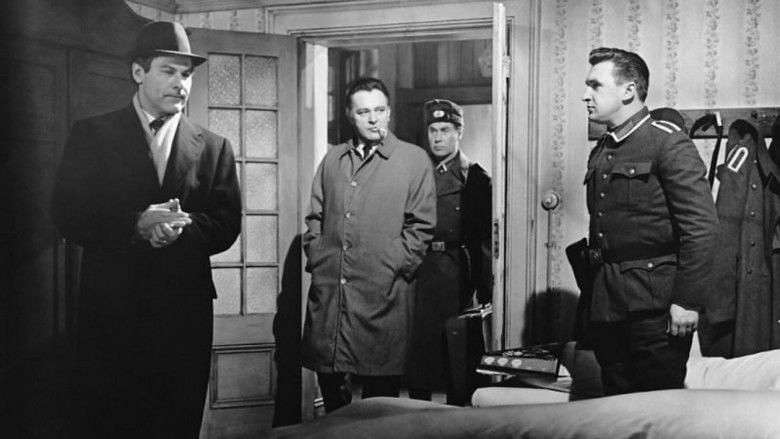
In the 1970s, many of my neighbours’ shelves would sport for a time one or two of the anthologies that Reader’s Digest put out several times a year. Each contained four or five novels in ‘condensed’ form. They were carefully aimed at landing within a safe middlebrow territory each time, and that made them a bit of a lottery. You could be bored out of your skull, but soldier on till the last one was done. Or, if it was your day, discover a new writer or indeed find three super stories to read.
I don’t know if the feeling that fiction was then essential to the sanity of a lot more people than now is accurate, but these books with their attractive layout and illustrations were a great place for a child to begin reading. These hardcovers were part of the curious flotsam of the time for that reason, perhaps. Nobody I knew seemed to subscribe to them or buy them, and yet they turned up now and then, and disappeared just as mysteriously.
Anyway, that is how I once read Harper Lee’s famous novel, and Nevil Shute’s Trustee from the Toolroom, and Giovanni di Lampedusa’s The Leopard in a mad weekend reading burst. That is also how I first came across writers like AJ Cronin, Morris West and John Steinbeck.
I remember, at the age of 12, finding in one of the Reader’s Digest books a portrait of a man by himself, given to the world of work, but not entirely bitter, and wondering with more than a twinge, if this was what adulthood would be like. I didn't like the book at all, on account of the acrid taste it left in the mouth, and fell upon its successor, a Wilbur Smith novel, with more enthusiasm. I had read my first John le Carre book, and it was not love at first sight.
Love came later, during a college vacation, accompanied by red binding and golden letters on the spine. Much before binge-watching, there was Heinemann Octopus. These sumptuous omnibus volumes brought together five or six books, unabridged, and were to be found by the dozen at the local City Central Library, and occasionally at the now-defunct British Library. This is how I read The Spy Who Came in From the Cold for the second time, and then fell upon the other George Smiley novels. The Cold War was still raging, and I had never been afforded the chance to experience up close the long winter that it had imposed on so many countries.
Some part of this love came from le Carre’s rarely acknowledged mastery of the English sentence. Within three paragraphs of his creation in Call For the Dead, the paradoxically named George Smiley becomes three metaphors in one sentence: "And so Smiley, without school, parents, regiment or trade, without wealth or poverty, travelled without labels in the guard’s van of the social express, and soon became lost luggage, destined, when the divorce had come and gone, to remain unclaimed on the dusty shelf of yesterday’s news."
More accurately, these are one metaphor, but three different sightings, somewhat like the idea of a trinity in one or two religions.
The novels were a-brim with another aspect of his genius — a talent for coining a word or a phrase. You thus met shoemakers, who forged documents, lamplighters, who snooped on mail, and pavement artists, who specialised in following people. Some of the terms he coined or popularised have gone into the dictionary: moles, honeypots, and indeed the idea of coming in from the cold.
Loving his books was also possible because of the great joy he found in planting allusions for you to unlock. The joke and the writing manifesto that he managed to hide in the name under which he wrote, for instance. In choosing to be John le Carre, David Cornwell became John the Square, and likewise John with a coin on both ends of the roulette table. Smiley strikes up much banter with a cop named Mandel in Call for the Dead, and when they are about to part, one says ‘That’s the end of a beautiful friendship’ and all this irony over Casablanca is met immediately with 'I bet you say that to all the boys’.
His biggest achievement was to take the espionage novel far away from the straight line that connects the Bulldog Drummond series, Maugham’s Ashenden stories and James Bond to a real-life territory where there was no Empire left, where the Americans were calling the shots, and where the English were struggling to stay in the game. Graham Greene took the spy novel and located it in the region of high comedy. le Carre’s stories travel away from the hypermasculine glitzing into a dark night, one where work may have meaning, but only occasionally.
When the Cold War ended, le Carre had more than enough mojo left for novels that explored the new realities. He had, after all, written at least one novel that looked at the Palestinian point-of-view before this. It was like getting to know him all over again when I found that he was not some conservative twit grinding against the hard fantasy of a national security state, but somebody fascinated by the idea of justice and sensible government in novels like The Night Manager.
This late-flowering is what I would like to remember him by. I can’t choose between that video where he passes the camera benignly while wearing a badge with the words Bollocks to Brexit and his acid remark in an interview about Putin's boys being no more than the KGB in drag.